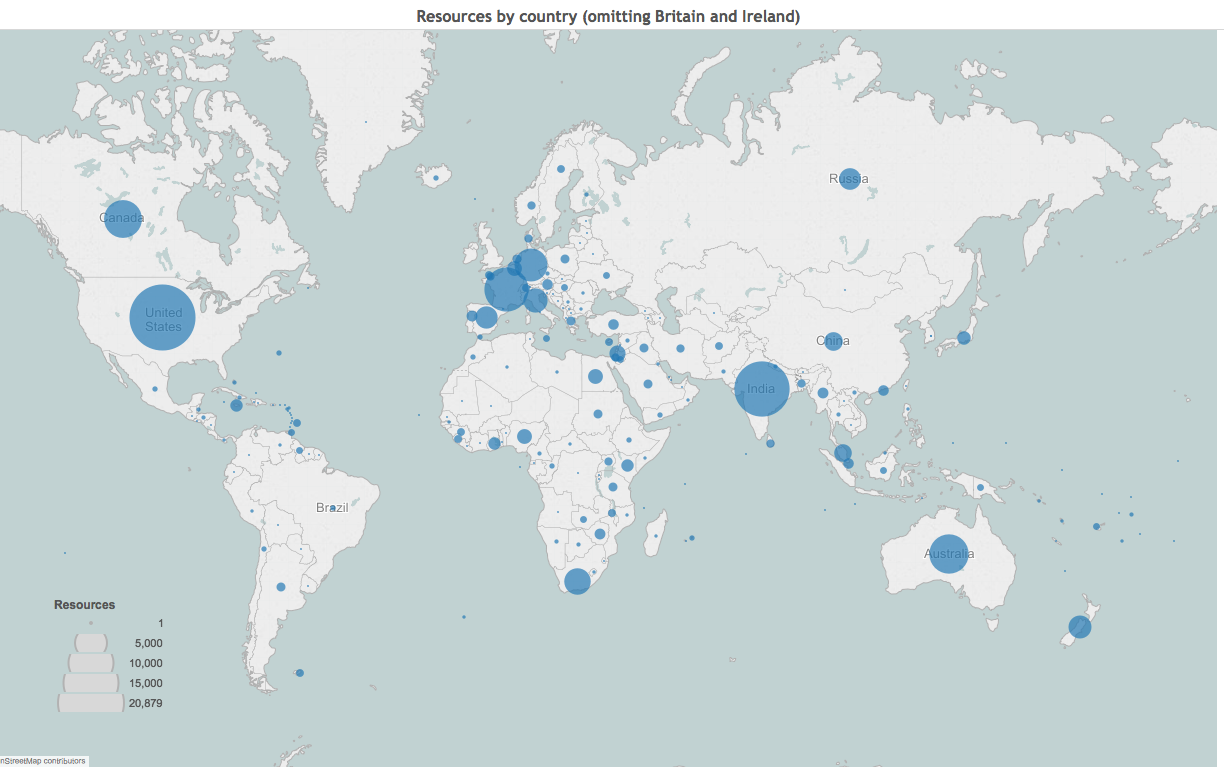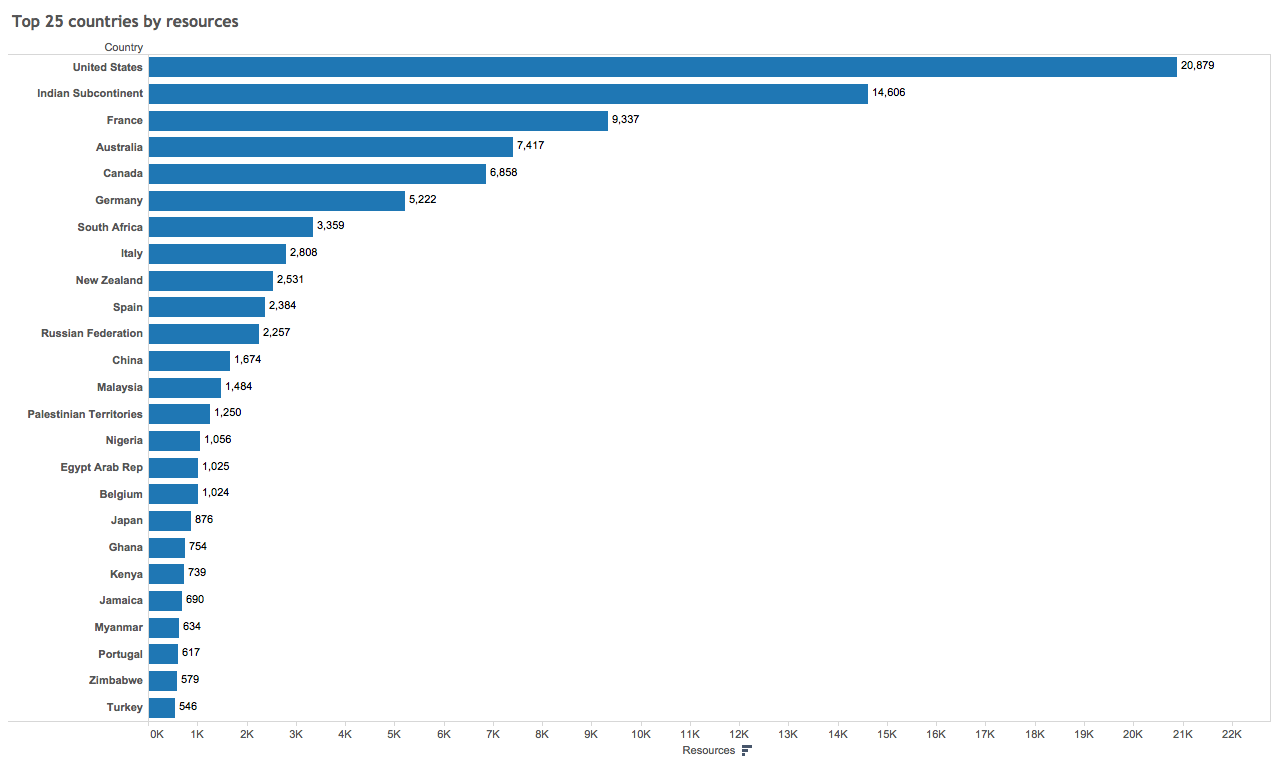
Click here for interactive version

Place name tree search details here
For this blog post, we wanted to present the global scope of the Bibliography. Despite being called the Bibliography of British and Irish History, material covering the rest of the world makes up a significant proportion of our resources. Using data visualization tools, we mapped the number of resources available onto a global frame using the figures from the latest update in June 2016 and the place names listed.

Click here for interactive version
The expansion of the British Empire explains the large amount of resources concerning North America, the Indian Subcontinent, Australia, South Africa, but other less obvious areas also feature prominently. Russia has 2,257 resources, China has 1,674, and Japan 876.
As expected, European relations account for a large chunk of material, with France being the highest European candidate with 9,337 resources, followed by Germany (5,222), Italy (2,808), and Spain (2,384). Interestingly, these figures highlight the close links that Britain and Ireland have had with the continent, and shows that our political and cultural relationship with Europe has continuously shaped our nation, as part of a wider historical legacy.
The resources are as diverse thematically as they are geographically; a brief search on ‘Crete’ reveals not just a selection of resources on the World War II campaign such as The Ariadne objective : the underground war to rescue Crete from the Nazis, but The man who deciphered linear B : the story of Michael Ventris, and Did Greek wine became Port? Or why institutional interventions matter (c. 1350-1780), an article exploring Cretan wine in medieval England.
Even more intriguing are the countries who have merely one resource to their name, Belarus has scraped in with the cosily titled Prince Potemkin and the Benthams, Mali has one resource called Barrow’s Boys, a book about exploration in the early nineteenth century, and Christmas Island gets some recognition in British imperialism and Australian mini-imperialism in the 1950s.
The visual representations of our resources really highlights the global reach of the BBIH, please click on the interactive links above to explore the full range of material.

